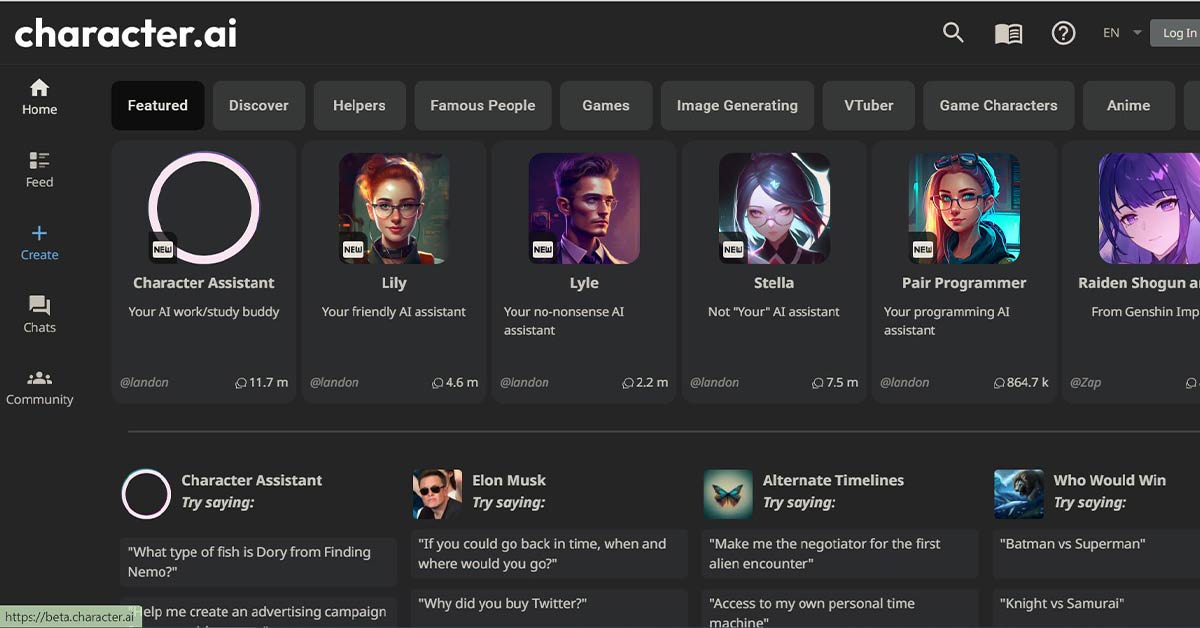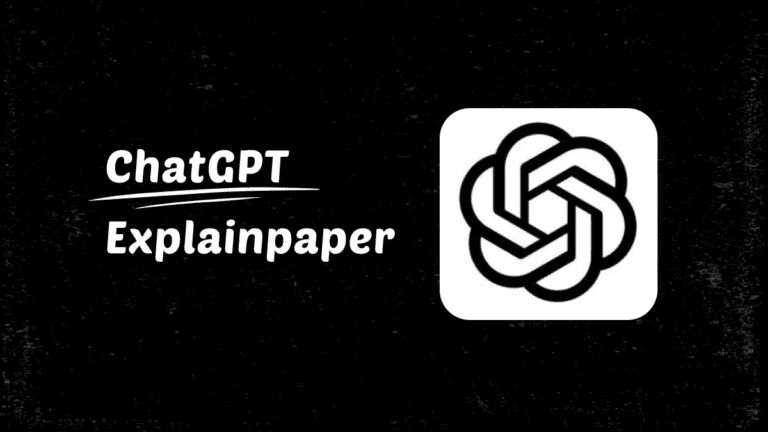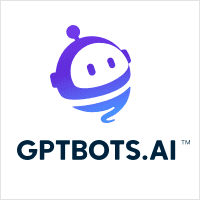Are you looking for How to Train Character AI?
Artificial intelligence has come a long way since its inception, and these days, it is bringing significant changes to various sectors.
One of the most fascinating applications of AI is the development of bots or AI characters that can converse with humans.
These AI characters possess advanced natural language capabilities, enabling them to engage in human-like dialogues with users.
However, not many people know how to train these AI characters effectively. The process involves a combination of natural language processing, machine learning, and data analysis.
As the demand for AI bots continues to grow, acquiring the skills needed to train them could be a valuable asset in the future.
Table of Contents
What is Character AI?

Character AI is a platform that leverages the power of neural language models to create AI characters.
These models digest vast quantities of text data, using it to generate responses to prompts that mimic the style and tone of the character they represent.
The platform allows any user to create an AI character, whether a fictional entity, a contemporary celebrity like Billie Eilish or Ariana Grande, or a historical figure like Napoleon Bonaparte.
The AI characters can engage in one-on-one or group chats where they interact with multiple characters and users concurrently.
This offers a unique and dynamic experience, creating a dynamic environment where AI characters and users can exchange ideas and engage in intriguing conversations.
What are the Benefits of Using Character AI?
Character AI offers a range of unique benefits.
First and foremost, it provides users with a new level of engagement, allowing them to interact with characters in previously impossible ways.
This can result in deeper connections to these characters and, by extension, greater engagement with games, apps, or other platforms where these AIs are used.
Character AI can bring historical figures to life in an educational context, making learning more immersive and enjoyable.
From a business perspective, these AI characters can be used instead of traditional customer service representatives, providing 24/7 support and helping automate routine tasks.
Moreover, with the ability to digest and learn from a vast amount of text data, these AI characters can continuously evolve, improving their performance and becoming more sophisticated.
How to Train Character AI: Step-By-Step Process

Step 1: Define the Character
The initial step in training an AI character is defining the character.
This primarily involves deciding on the personality and background of the character.
Is your character a historical figure, a celebrity, or a fictional entity? What are their key characteristics or traits?
How do they typically react in various situations?
These are a few questions you need to consider while defining your character. Notably, the more detailed your character definition, the more realistic and consistent your AI character will be.
This step also involves framing the character’s language style, tone, and usual phrases, which provides the fundamental base for the subsequent training process.
Step 2: Design the Dialogue System
The second step in the process is designing the dialogue system.
This is where you’ll decide how your AI character will converse.
The dialogue system must be designed in a way that allows your AI character to generate responses that are contextually relevant, coherent, and stylistically consistent with the character’s personality.
This process involves defining the rules and parameters your AI character will operate.
You’ll need to decide on the response generation technique – whether you’ll use rule-based, retrieval-based, or generative models.
Rule-based models operate strictly within pre-defined rules; retrieval-based models select responses from a pre-computed set. In contrast, generative models create responses from scratch.
Each has its strengths and weaknesses, and the choice often depends on your project’s specific needs and constraints.
Remember to consider elements such as the character’s use of language, their typical responses to specific prompts, and how they evolve throughout a conversation.
Step 3: Gather Training Data
The third step is all about gathering the training data.
This involves collecting significant amounts of text data your AI character can learn from.
The data should be relevant to the character’s persona, style, and subject matter.
For instance, if you’re creating an AI character based on a historical figure, you might collect data from their speeches, letters, or other writings.
If your character is entirely fictional, you could gather data from similar literary characters or even create mock dialogues.
This training data will be instrumental for the AI to understand how the character thinks, speaks, and reacts in various situations.
Remember, the quality and quantity of your training data directly influence the performance of your AI character- the more high-quality data you have, the better your AI character will be.
Step 4: Train The Character AI
The fourth step is about training the AI character.
This process involves feeding the character’s model with the collected and processed data.
Training is computationally heavy, often requiring robust computer systems or cloud-based resources.
The AI model scans this data during training, learning from the character’s style, tone, and linguistic nuances.
It identifies patterns and learns to predict responses based on these patterns.
This step may involve machine learning techniques such as reinforcement learning, where the AI is rewarded for good responses and penalized for bad ones, encouraging it to improve over time.
Throughout the training phase, it’s essential to continually test and evaluate the model’s performance, making necessary adjustments until the AI character starts to mimic the defined character accurately.
Step 5: Implement AI Algorithms
The fifth step involves the implementation of AI algorithms that drive the character’s ability to understand and generate responses.
Depending on the complexity of your character, this might include implementing natural language processing (NLP) techniques for understanding user inputs, machine learning algorithms to generate character responses, and potentially even deep learning models for more complex interaction patterns.
These algorithms, trained with the data collected in previous steps, enable the AI character to engage in convincing, character-consistent conversations.
They analyze incoming messages, process the information, and generate relevant responses in real-time, providing the interactivity that makes AI characters so engaging.
This step also includes integrating the trained model into the desired platform, whether a game, an app, a virtual reality environment, or any other interface.
Regular monitoring and updating of these algorithms are essential to maintain the performance of your AI character and ensure it continually improves over time.
Step 6: Integrate With The Platform
The final step involves integrating the trained AI character with the desired platform.
This could be a mobile app, a video game, a website, an AI assistant, or any other digital environment where the character will interact with users.
This step requires careful planning to ensure the AI character operates smoothly within the platform’s constraints and parameters.
It also involves setting up systems for the AI character to receive inputs from and deliver responses to users in real-time.
Integration may also require collaboration with software developers and user experience (UX) designers to create an interface that facilitates seamless and intuitive interactions between the users and the AI character.
Post integration, it is critical to conduct thorough testing to ensure the AI character functions as expected and delivers a satisfactory user experience.
Any glitches, inconsistencies, or performance issues detected should be rectified at this stage before the final release.
Step 7: Test and Iterate
The seventh step is centered around testing and iteration.
This process involves rigorous testing of the AI character in various scenarios and contexts to ensure its responses are accurate, contextually relevant, and in line with its designed persona.
Feedback from these tests is crucial in identifying areas of improvement.
The character’s dialogue system should then be iterated upon and enhanced, with changes ranging from minor tweaking of dialogue rules to a significant overhaul of the AI algorithms.
It’s important to note that this process is iterative and continuous, even after the AI character has been deployed.
The AI character should learn and evolve as user interactions continue, necessitating ongoing testing and improvements.
This ensures that the character remains engaging and responsive and continually improves.
Step 8: Update and Monitor
The eighth and final step is continually updating and monitoring the AI character.
After the character has been deployed, keeping a close eye on its performance and how it interacts with users is crucial.
This step involves regular interaction data analysis, understanding how users engage with the character, and identifying areas that could be improved.
Based on this feedback, changes in the AI character’s dialogue system may need to be made. Regular updates are also essential to ensure that the character stays fresh, relevant, and engaging for users.
Additionally, monitoring can involve assessing the character’s performance in real-time, promptly detecting and addressing any technical issues or inconsistencies.
This ongoing process helps to ensure that the AI character remains reliable and compelling and continually improves over time.
Helpful Tips and Tricks to Train Character AI
- Use Diverse Training Data: To create a well-rounded AI character, it’s essential to use a wide array of training data. This helps the AI understand and respond to various inputs, enhancing its versatility and realism.
- Continuous Testing and Refinement: Regular testing and refinement are crucial to train a compelling AI character. This includes frequently evaluating the AI’s performance and making necessary adjustments to enhance its responsiveness and accuracy.
- Leverage Advanced AI Techniques: Use advanced AI techniques like reinforcement learning, deep learning, and natural language processing to enhance the character’s ability to understand and respond more human-likely.
- Pay Attention to the Character’s Persona: When training your AI, keeping the character’s persona at the forefront is essential. Every interaction should reflect the character’s personality, tone, and style.
- Ensure Real-time Interaction: To make the character engaging and interactive, train it to respond in real-time. This involves optimizing the AI algorithms and hardware resources to ensure quick and accurate responses.
- Monitor User Interaction Data: Regularly monitor user interaction data and use it to refine the character’s responses. This helps in understanding the likes and dislikes of your users, enabling you to customize the AI character’s responses accordingly.
How To Speed Up Training Character AI
Training character AI can be time-consuming, but several strategies can accelerate progress.
Utilize Transfer Learning
Transfer Learning is reusing a pre-trained model on a new problem.
It’s a popular approach in deep learning because it can train deep neural networks with comparatively little data.
This is very useful as most real-world problems typically do not have millions of labeled data points to train complex models.
Implement Parallel Computing
Parallel computing is a type of computation where many calculations or processes are carried out simultaneously.
Leveraging parallel computing for AI training can significantly reduce the training time.
Modern GPUs are designed to execute hundreds of tasks simultaneously, which makes them great at parallel tasks.
Use Efficient Algorithms
Efficient algorithms and the use of approximation techniques can speed up AI training.
Techniques like quantization, which involves using lower precision computations, can drastically reduce the memory and computation needs of the training process.
Optimize Hyperparameters
Hyperparameters are critical as they control the overall behavior of an AI model.
The process of hyperparameter tuning is time-consuming but can lead to significant improvements in training speed.
Automated hyperparameter optimization can be a solution here, which uses algorithms to automatically search for the optimal hyperparameter configuration for a given model.
Adopt Early Stopping
Early stopping is a form of regularization used to avoid overfitting when training learners with an iterative method.
It involves stopping the training process before the learner passes a particular point of overfitting, thus saving time and computational resources.
FAQs
How Does Character AI Learn?
Character AI learns through machine learning, a subset of artificial intelligence that involves statistical techniques to enable machines to improve at tasks with experience.
Initially, the AI is fed with much training data, including various scenarios, responses, and dialogues. AI processes and interprets this data to learn patterns and relationships.
Machine learning algorithms then use this knowledge to make predictions or decisions without being explicitly programmed to perform the task.
Depending on the data’s nature and task, this learning process can be supervised, semi-supervised, unsupervised, or reinforced.
Over time, with more data and interactions, the AI character continually refines its learning, improving its responses and becoming more sophisticated and human-like in its dialogues.
The aim is to create AI characters to understand, learn from, and respond to realistic and engaging human interactions.
Is Character AI Real or Fake?
Character AI straddles the line between reality and simulation.
While the AI character is not a “real” entity in the sense of being a living, breathing human, it is capable of real-time interactions, learning from user behavior and evolving its responses over time.
Its intelligence and learning capability are genuine, grounded in advanced AI techniques and continuous data analysis.
However, it’s important to note that AI characters are ultimately creations of their programmers, guided by algorithms and training data.
Despite their advanced capabilities, they are simulations designed to mimic human conversation and behavior.
So, while character AI isn’t “real” in a human sense, its functionality, adaptability, and learning capacity are genuine within artificial intelligence.
Wrapping Up – How to Train Character AI
Training an AI character is a complex, iterative process that requires a mix of the right techniques, continuous refinement, and an understanding of the character’s persona.
With varied training data, regular testing, and advanced AI techniques, it can enhance the character’s responsiveness and make it more realistic.
Transfer learning, parallel computing, efficient algorithms, hyperparameter optimization, and early stopping can significantly speed up AI training.
While the AI character is not a “real” entity, its ability to interact in real-time, learn from user behavior, and evolve its responses makes it a powerful tool in artificial intelligence.
Despite the complexities, the results are rewarding, creating AI characters that can engage in realistic and captivating human interactions.





